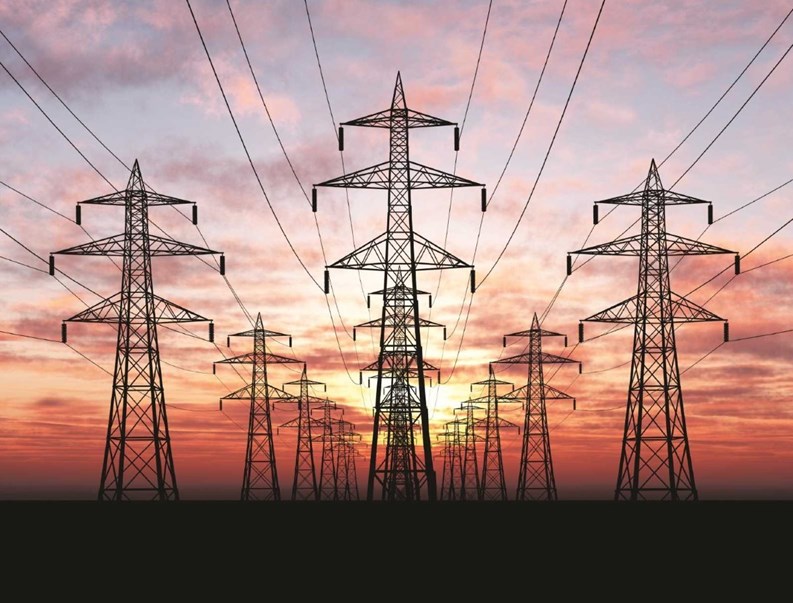Saving money is always a top concern of any co-op or condo board, but with tough economic times and high fuel prices, saving on energy costs can be a challenge. Thanks to deregulation of the New York energy market a little over a decade ago, boards and managers have a wide array of options for energy delivery—many of which can yield significant savings.
According to Mark Loughlin, vice president and CFO of FFC Energy in Brooklyn, energy was deregulated because monopolies in the market had energy customers up in arms. “The consumers complained that they didn't have a choice in providers. It was monopolized for many years until the Public Service Commission gave the other companies a chance to sell at the same time and offer consumers a choice. It was about having the power to choose.”
So what's the best way to choose a new energy service company (ESCO) and find a good deal, if you're looking to switch?
Doing the Right Research
If you're just starting out in the process of researching ESCOs, a good place to begin might be the New York State Public Service Commission's (PSC) website at www.dps.state.ny.us, or www.newyorkpowertochoose.com, or Con Edison's ConEd Solutions at www.conedsolutions.com or Con Ed’s www.poweryourway.com. There you can find a listing of current ESCOs eligible to sell energy in New York and current plans and current promotional offers. It's a good idea to check the price per kilowatt hour of several companies you may be considering to give you a beginning basis for comparison, and see if the ESCO is offering any incentives to new customers, and if the prices quoted include taxes. ESCOs are known to offer discounts to entice customers to switch. Check the individual websites for more information.
Nate Kessman, vice president of business development for Great Eastern Energy in Brooklyn, says boards and managers should keep a few important tips in mind before choosing an ESCO.
“Aside from the obvious due diligence that boards should always conduct such as references, terms of the current agreement, board members should definitely be in agreement about the long term goals that they seek in regards to energy management,” Kessman says. “And there should really be an open dialogue about the decision-making process. Boards, I think, should also know that today’s lowest price isn’t necessarily the best deal, because working with a commodity means changes in pricing happen every minute. You want to look for a company that has your long term goals in mind. You should always know that savings comes from improved efficiencies and a well-thought out procurement strategy not today’s low price. That’s one of the things people should definitely know.”
The process of switching itself is very simple, according to Joe Graham, co-principal of Long Island-based JTT Energy. “It’s very, very simple. You just give your account number and say, ‘Yes, I'd like to switch’.”
That simplicity has its drawbacks, however, says Graham. “If you do it over the telephone and you say yes to a telemarketer, they'd consider that as good as a contract, because you'd be on a variable rate. They take your account number, send it to the utility, and next month you'd be switched. You might never notice the difference unless you look at your bill, under the ‘Commodities’ portion, it'll say whoever is servicing you and where it's coming from. It'll also tell you your price per therm and the therms you use.”
Kessman says that naturally all companies differ and boards and managers should consider whether they want a smaller local company with hands-on management or a larger company that may have a take-a-number mentality. Some companies can be more flexible with their contract terms than others, so it’s important to check, he says. Some companies don’t have the ability to service all types of clients, for example, those with dual-fuel capacity or interruptible service. Some offer both commodities—electric and natural gas—while others don’t.
New York utilities offer special programs to assist you with switching to an ESCO: Con Edison's "Power Your Way" program, National Grid's "New Choices" program, and Central Hudson's "Customer Choice" program. Once you select a rate plan, your new energy service supplier and your local utility coordinate everything else. You will begin receiving electricity and/or natural gas from your new supplier typically within 15 to 45 days, depending on your billing cycle. There will be no disruption in your service.
Switching from Oil to Gas
In August 2010, the New York City Council passed Local Law 43, which under a Department of Environmental Protection rule amendment requires all buildings in the five boroughs using No. 6 heating oil to switch to a cleaner alternative—either No. 4 oil, No. 2, or natural gas. Buildings with heat and hot water boilers and burners using No. 6 oil have the option of first converting to No. 4 oil by 2015, or they can switch directly to No. 2 oil, gas, or both. Buildings using No. 4 heating oil have until 2030 to switch to No. 2 oil, gas, or both. All newly installed boilers, however, must also burn No. 2 oil, gas, or both.
Although only 1% of New York City's building stock (approximately 10,000 buildings) have boilers that burn No. 6 and No. 4 heating oil, which are high in sulfur, nickel, and other pollutants, they account for 90% of the city's soot pollution, more than all the cars and trucks in the city combined.
Kessman says that there’s a huge price differential between natural gas and heating oil. But since the city’s Clean Heat mandates have come out plus the compliance with Local Laws 84 and 87 for benchmarking audits and retrocommissioning, more buildings are going forward with energy management projects.
“It makes a difference. The difference between No. 6 and No. 4 is considerable in regards to the sulfur content,” he says.
Pay attention to your ROI, Kessman says. “It’s really about management. It’s about long-term management not short-term gain. Similar to choosing any other investment, there should be a return of investment of five years or less on these projects. Oil to gas conversions, basic lighting conversions, you should see a return on investment within five years. A lot of times the savings pays for the upgrade.”
Get a Good Price
There are a few different options when deciding on the price you're going to pay for utilities. According to Graham, you may opt for a bill with a fixed price, or a specific rate for a specified period of time. For example, an ESCO may give you a quoted price of eight cents per kilowatt for a period of one year. That price won't change for the entire length of the contract. This is beneficial if prices elsewhere are increasing during the year. On the other hand, if prices drop, you're still locked into the now-higher rate, and you must honor your contract at that price. However, if you've chosen the fixed rate, your ESCO may give you the option to renew at a more favorable rate. The pros suggest that if possible, see if you are able to negotiate the price before committing to a particular utility company.
Another option is paying the "index price," which is a discount off the current Con Ed rate. For instance, you may find an ESCO that will give you a one percent discount off the rate Con Edison charges. The index price will give you the ability to enjoy the downs of the market while still being open to exposure if prices rise. How much you pay is dependent on what the market does. Many ESCOs won't guarantee that you'll save money unless you buy at an index price.
Some energy industry professionals recommend that you let the season help determine what type of a rate you should choose. In summer months, go with a fixed price—with air conditioners and other appliances in frequent use—a fixed price can help keep bills under control. In the winter, however, buying power at an index price will help you take advantage of the fluctuations in the market.
Another option is to consult your building's management company, which may be looking to aggregate some of their buildings under the same ESCO. A third-party aggregator may be able to negotiate better terms of service with 20 buildings versus your one building. A downside to this is that your building would be lumped together with several others, and may not enjoy such specialized service.
If you already have a contract with one provider and wish to switch, says Graham, there are options. “If they are on a variable rate contract with the Public Service Commission (PSC) there is a 30-day out clause in the contract. They can turn around and send their ESCO provider a letter saying they wish to switch, or go to back Con Ed or switch to company X, and they have to be released. And if they're not, if they still have a problem a few months later, they contact the PSC and lodge a complaint—and trust me, they'll get released right away.”
Conversely, Graham continues, “On a fixed contract, if someone buys a 12-month fixed contract and in month five of that contract they say, ‘Well, rates went down and I feel that it's not working for me,’ Sorry, but you bought a fixed contract because you wanted to lock down a price. We laid out a credit line and deposit to secure that price for you, so that contract stays in force. If you want to get out, then there is a penalty to pay.”
How much that penalty is depends upon a number of factors, but would probably be somewhere in the neighborhood of 20 to 25 percent of what was laid out on deposits and other sums.
Look at Your Bill
Switching ESCOs will usually result in a change in the billing process. Now, instead of receiving one bill from Con Ed, you may receive two bills: one from Con Ed, and the other from your new provider. This is not a mistake: Con Ed will still read the meter and charge for delivery. The third-party ESCO supplies the power and also bills you. A point to consider is that although you're getting a specific rate from your new ESCO, it may take more than just a glance at your bill to tell if you are actually saving money. With two bills instead of one, someone will have to add the two together to see the total energy bill.
Your savings may also be in the form of sales tax on the delivery portion of your bill, which you may not even notice unless you know to look for it. That doesn’t mean the savings aren’t there however, says Graham.“You could save anywhere from about eight to 12 percent.”
Not everyone who looks to switch ESCOs is looking for outright savings, however. Sometimes, a customer is more in search of stability in his or her bill. Some customers may be paying more than market rate, but knowing approximately how much they're going to spend each month helps keep a budget in check, and may help avoid surprises, such as unexpectedly-high bills during those hot summer months. For some, that advance knowledge is more valuable than a less-certain dollar amount saved.
Before You Sign the Dotted Line
In order to determine whether switching your ESCO is worth it, your board/management team might want to consider speaking with a consultant who can provide you with a monthly or quarterly analysis of your bills and give you insight into the bigger picture: Are you saving money? Are you currently utilizing the best type of service for your building? Without a long-view familiarity with the market, it could be a tough call.
And once you are a customer, it's not guaranteed that your rates will stay the same from year to year, cautions Graham. “At the end of the day, [the ESCO] controls the number they put into the system to charge you. So they may tell you they’re going to save you 10 percent for three months, let's say. Then when you're not looking, they may creep your price up and be the same as National Grid or Con Ed. If you get a phone call at dinnertime and they start asking you questions about your natural gas or your electric, and if you say yes to certain questions, they may automatically take that as a ‘yes’ and sign you up. Make sure that you know what you’re signing, or if you go to somebody's website, make sure you check what you meant to check. I tell people, buyer beware: check your bills, check your numbers, pay attention. If you do, you do save money.”
For most buildings, the cost of energy is a significant expense. The good news is, as a consumer, you can take control of your energy future. Take the time to understand the opportunities available to you. If you think you might be able to save your building a substantial amount of money by switching ESCOs, then it's well worth the effort of researching different suppliers and deciphering two monthly bills. If the savings are negligible, or if you think the paperwork and extra vigilance may offset the benefits of saving a little money, you might just be happier staying put. It all boils down to awareness and comparing options.
Consumers may also contact the New York State Public Service Commission for assistance at powertochoose@dps.ny.gov.
Hannah Fons is associate editor of The Cooperator. Managing Editor Debra A. Estock contributed to this article.










Leave a Comment